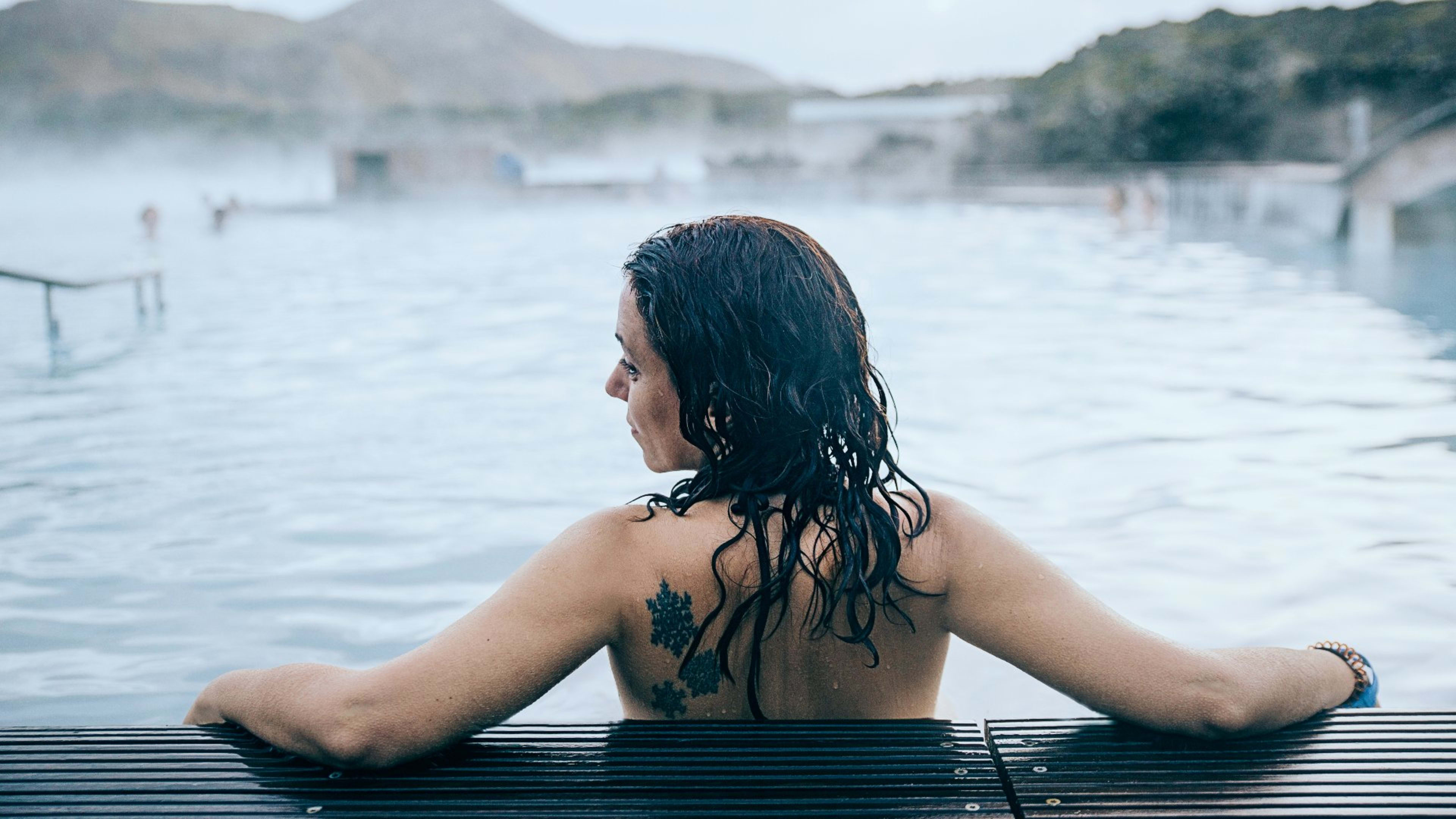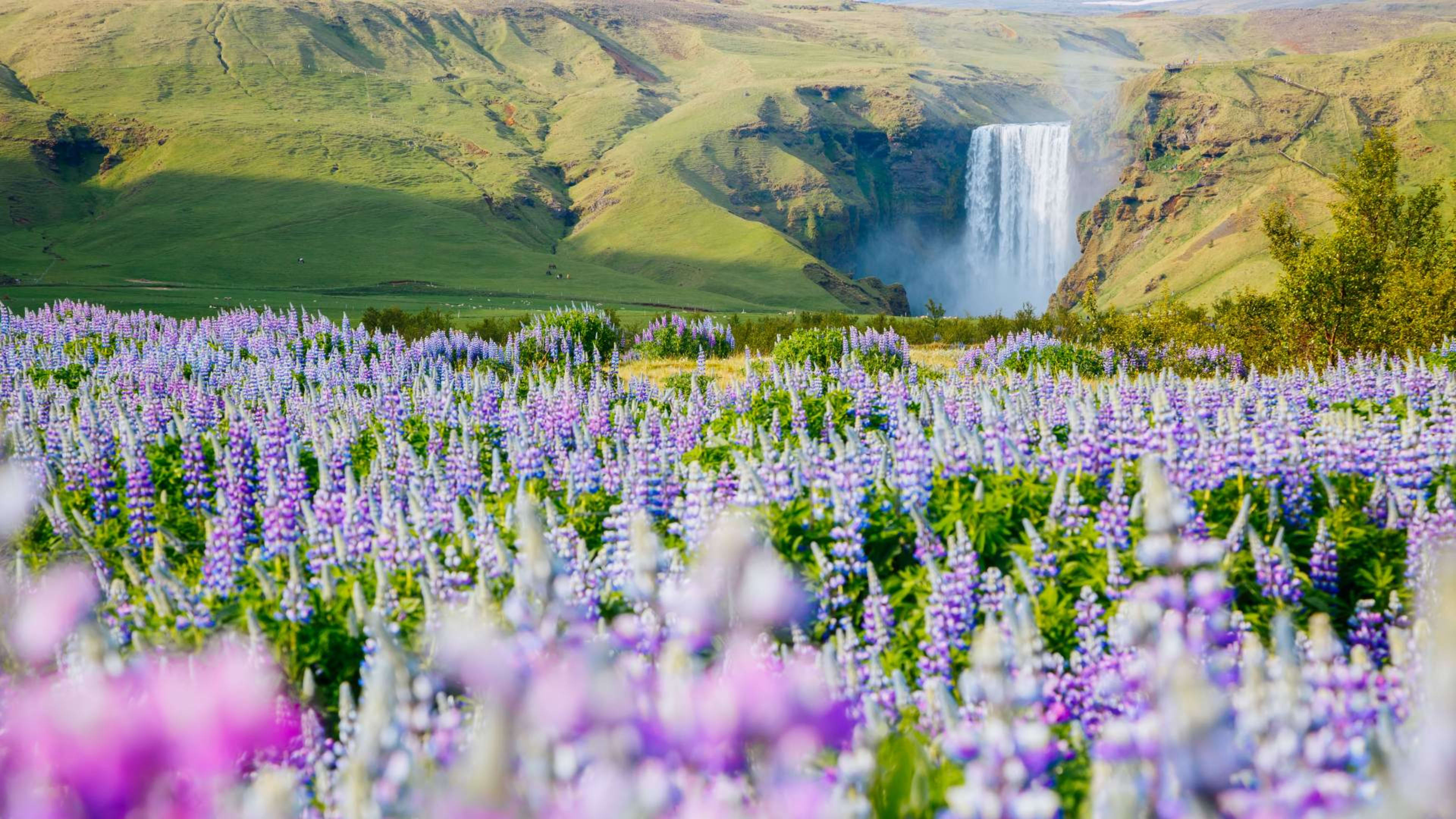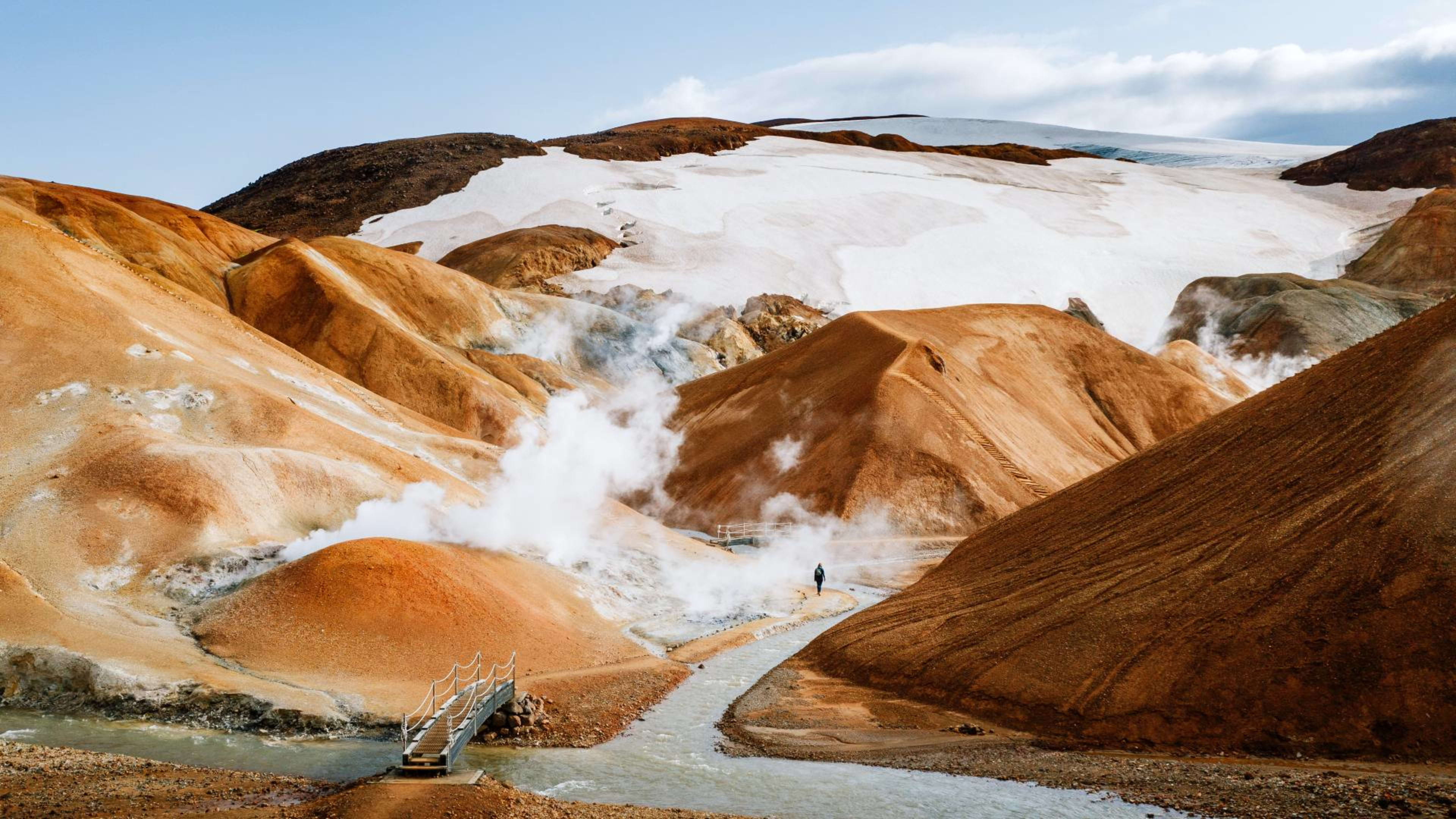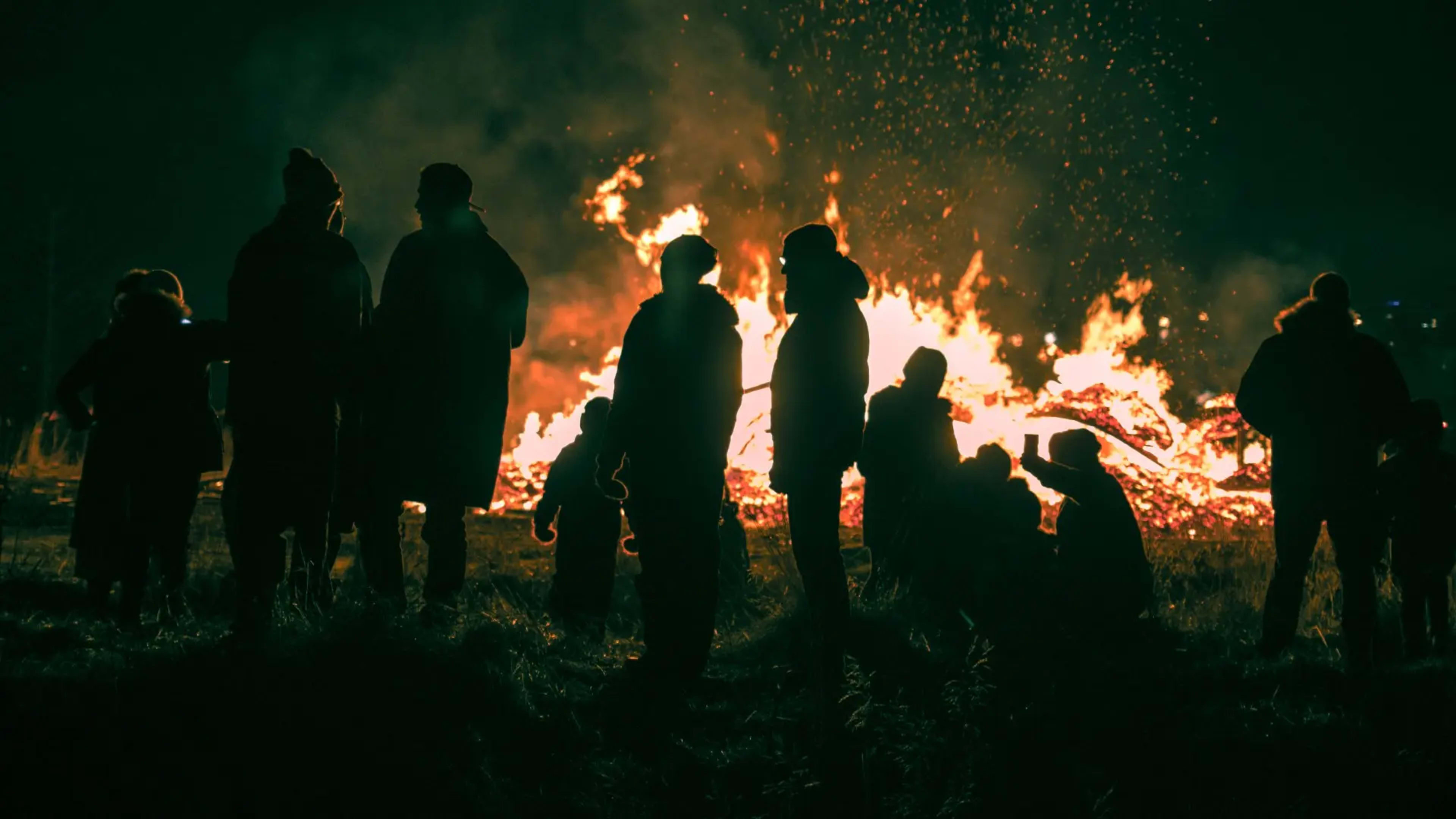You may have seen the tranquil photos of bathers in milky-blue waters set against stark lava fields. The Blue Lagoon in Iceland is synonymous with relaxation and incredible spa experiences. It’s no wonder this geothermal pool has become one of the most popular attractions in Iceland!
If you’re looking to know more about this spa and what you can expect from your visit, we answer your frequently asked questions about the Blue Lagoon below.
- Interested in Blue Lagoon tours? All of Iceland vacation packages can be tailored with a visit to this geothermal spa.
About the Blue Lagoon
First things first, what is the Blue Lagoon? Maybe you’ve heard the name and know it’s a must-see in Iceland, but not much more?
The Blue Lagoon is a spa pool with milky-blue waters enriched with minerals. As the lagoon is soothing as well as a spectacular sight, it has become a very trendy stop in Iceland. In fact, it is one of the most visited places on the island!
Read on to learn about how it was formed, what is in those iconic blue waters, and more.

What is in the Blue Lagoon?
The Blue Lagoon is famous because of the unique color of its water: a milky shade of blue. This is thanks to its high silica content. The water is also rich in salts and algae.
And you’ll be glad to hear nothing else is added. In fact, the Blue Lagoon holds 9 million liters of geothermal seawater, which naturally renews itself every 40 hours or so. As foreign bacteria don’t thrive in this ecosystem, no disinfectants are needed.
Where is the Blue Lagoon in Iceland?
The Blue Lagoon is located on the Reykjanes peninsula, south of Reykjavík. It is set amidst the lava fields of Grindavík near Þorbjörn mountain.
The lagoon is only a 20-minute drive from Keflavík International Airport and about 45 minutes from downtown Reykjavík. This handy location makes the Blue Lagoon an ideal spot to visit upon arrival or departure from Iceland, or as a day trip from the capital.
- Find an Iceland city break to suit you.
- Related: Things to see and do near Reykjavík.
Is the Blue Lagoon a natural spring?
It may surprise you to hear that no, the Blue Lagoon is not a natural hot spring but is actually man-made. And in the same vein, the water actually comes from the nearby Svartsengi geothermal power plant.
After the geothermal extraction at the power plant, the extra water that isn’t used to heat the homes of Icelanders is released onto the nearby lava field. This is how the Blue Lagoon got its humble beginning.
After a lot of research into the benefits of geothermal seawater, including the algae and silica, the Blue Lagoon was founded officially in the 1990s. It has since evolved into the well-known hub of hospitality and wellness that exists today.
The story of the Blue Lagoon
The story of the Blue Lagoon is pretty unusual – it was created by pure accident. The Reykjanes peninsula, on which it stands, is famous for its geothermal energy, which has been harnessed for years. The process is straightforward: hot water is drilled deep underground, shooting up to drive turbines and generate electricity.
One day, while drilling a new hole, plant workers noticed something strange: unusual water started bubbling up. Curious, they decided to let it flow to see what would happen. But this water wasn’t like any other.

It quickly began coating the turbines, shutting them down completely – a major problem in a country not known for warm weather. So, as quickly as they could, the workers dumped the water and returned to an old hole.
However, the water spilled out and coated the sharp lava rocks, forming a lagoon. Little did they know that this accident would become one of the most famous landmarks in Iceland!
The first soak in the Blue Lagoon
At first, people feared the water’s unique turquoise color, thinking it could be poisonous. But one man who worked at the plant, Valur Márgeirsson, saw things differently.
He had psoriasis, and none of the treatments he’d tried before had worked. That was until he noticed his hands healing after working with the turquoise water.
Despite the initial skepticism, Valur found a doctor who thought soaking in the lagoon was worth a try. Geothermal bathing is a longstanding tradition in Iceland. So, Valur took a dip in the ‘dangerous’ lagoon, and his condition improved dramatically after just a few soaks!
Word spread quickly, and in just 30 years, this accidental lagoon became the world-famous spa it is today, all thanks to one brave man, Valur.
- Learn about the tradition of geothermal bathing in this spas & hot springs guide.
Does the Blue Lagoon smell like sulfur?
Generally, the hot water in Iceland sometimes smells of sulfur, the effects of its geothermal origin. Although some geothermal areas you might visit smell strongly of sulfur, like Námaskarð or Seltún, you may not notice it at the Blue Lagoon.
Some do smell it upon arrival, but you’ll get accustomed to it as you relax and enjoy this memorable experience.
Good to know: The smell is natural and nothing to be worried about. In fact, did you know Iceland has one of the cleanest waters in the world? Icelanders drink it straight from the tap, unfiltered. So, to do like the locals, don’t forget your bottle to refill during your trip.

Is the Retreat Spa at Blue Lagoon worth it?
Only you can answer that question. It depends on what you want out of your visit, how much time you have and, importantly, your budget.
The Retreat Spa is the luxury spa of the Blue Lagoon and therefore you’ll enjoy an exclusive experience if you book it. The price starts around ISK 50,000 (EUR 321, USD 390, GBP 278) for a 5-hour stay.
You can expect access to:
- The famous Blue Lagoon
- The exclusive Retreat Lagoon
- A private changing room
- The Blue Lagoon Ritual, an exhilarating spa journey
- The Blue Lagoon skincare amenities
- The Spa Restaurant
- The 8 subterranean spaces (relaxing rooms, a sauna, and more)
You’ll also get a drink of your choice and the chance to enjoy massages and beauty treatments.
How much does it cost to go in the Blue Lagoon, Iceland?
Prices to visit the Blue Lagoon depend on the package you choose. There are 3 levels: comfort, premium, and luxury. For up-to-date information and prices, we recommend checking the Blue Lagoon website.
What are the Blue Lagoon opening hours?
The Blue Lagoon is open 365 days a year, but the opening hours vary depending on the season. In summer, you’ll find that opening times are longer. Check their website for up-to-date information.
Please be aware that pre-booking is essential. As it is one of Iceland’s most popular spots, you’ll want to reserve your slot in advance to avoid disappointment.
During your visit to the Blue Lagoon
You’re booked in and ready for all the comforts of bathing in the Blue Lagoon. Here is what you can expect of your visit.
What is included with the Blue Lagoon entrance?
There are 3 different packages you can purchase at the Blue Lagoon. Comfort, premium, and the luxury entrance for the Retreat Spa, which we’ve discussed above.
On a comfort package, you’d enjoy:
- Entrance to the Blue Lagoon
- Silica mud mask
- One drink at the in-water bar
- Use of a towel
- Sauna, steam room, and steam cave
- Lagoon waterfall
In addition to these, on a premium package you’d also have:
- Second mask of your choice
- Slippers and use of a bathrobe
- Table reservation at the Lava Restaurant and a glass of sparkling wine if you dine here
How long do you need to spend at the Blue Lagoon?
It is recommended that you schedule at least 2 hours to savor the full wonders of the Blue Lagoon. But on average people spend around 4 hours here. This way you’ll have plenty of time to soak up all the benefits of the warm waters.
And it’s good to note that you book an arrival slot, but there is no time limit until closure, so relax and enjoy!
- As well as a visit to the Blue Lagoon, see all the activities you could add to your itinerary with Iceland Tours.
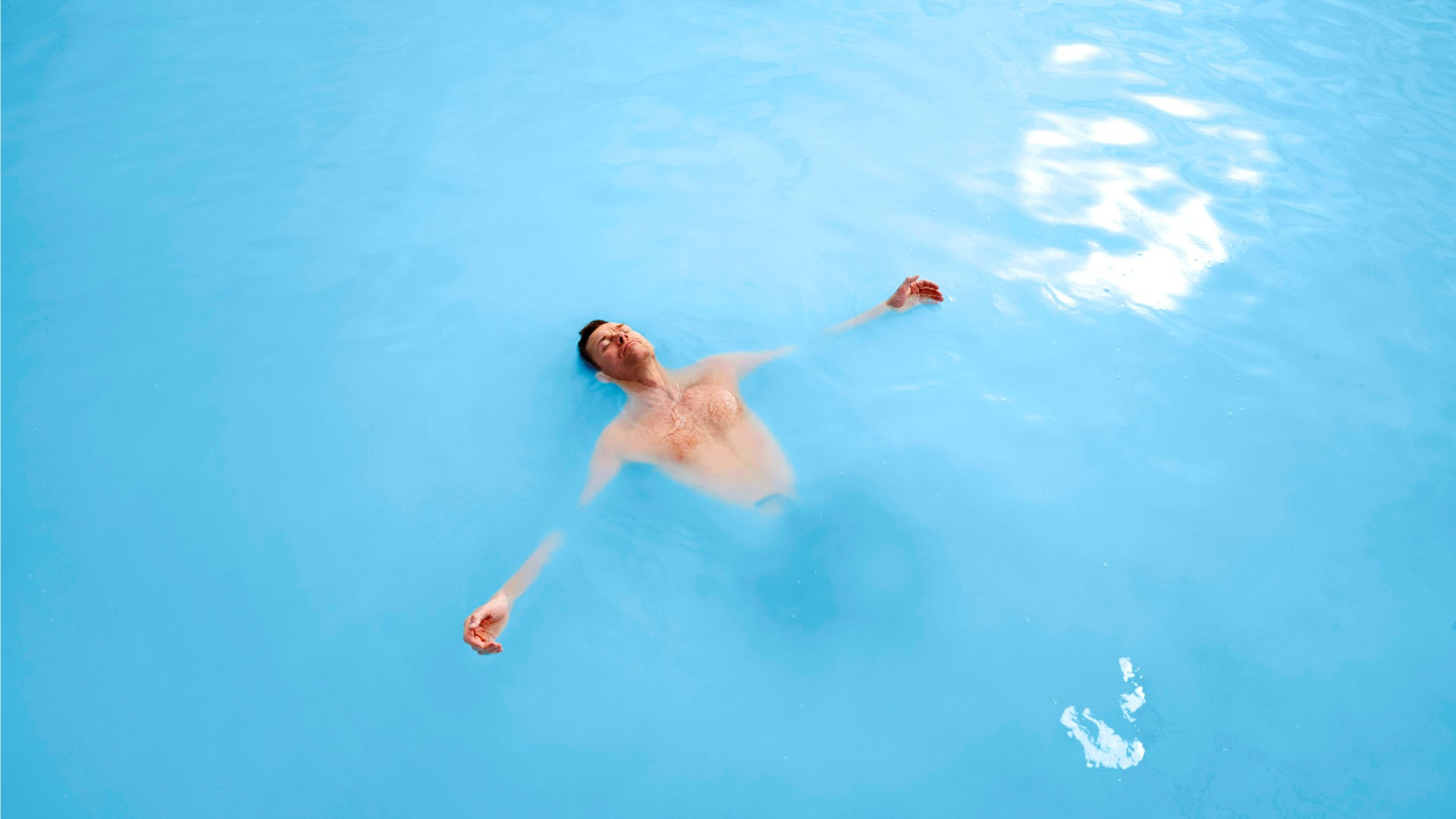
What to pack to visit the Blue Lagoon?
If you’re visiting on a day trip from Reykjavík, you’ll want to pack a small bag with:
- Your swimsuit (and bag for the wet swimsuit)
- Flip flops or water shoes
- Any soaps or products you want to use
- Hairbrush
- Water bottle to stay hydrated
- Sunglasses for bright days
Please note that shower gel, conditioner, and body moisturizer are available in the changing rooms. So are hair dryers.
Every package also comes with the use of a towel, but you can bring your own if you would rather do that. You may want to pack a robe too as it is not included in the comfort package.
You don’t need to pack a lock as you’ll be given a wristband upon entry which also acts as your changing room locker key.
If you have your luggage with you, on your way to or from the airport, you can still store it at the Blue Lagoon. You’ll have to pay a small fee to leave your suitcase or large bags in the Luggage House in the main Blue Lagoon parking lot.
Don’t forget to pack a smaller bag with your essentials.
- Browse these self-drive tours of Iceland.
Does the Blue Lagoon ruin your bathing suit?
No, the water of the Blue Lagoon is unlikely to ruin your swimsuit, or even cause stains. But it is recommended that you rinse your swimsuit with cold water and soap after your stay. If you’re worried about it, you can actually rent a swimsuit from the Blue Lagoon for a small fee.
On that note, the Blue Lagoon does recommend you remove any jewelry or glasses, so they aren’t damaged (or lost) while you’re in the water.
Does the Blue Lagoon ruin your hair?
No, your hair won’t be ruined as the water isn’t harmful. But the silica of the water may make your hair stiff and difficult to manage for a few days after your visit.
Our recommendation is to tie your hair up if it’s long and apply plenty of leave-in conditioner, which you’ll find in the changing rooms. We also advise you not to put your hair in the water.
Is the Blue Lagoon good for eczema?
While eczema isn’t mentioned specifically, the waters of the Blue Lagoon are generally soothing for the skin. The water is rich in minerals as well as silica, algae, and salts, and the combination helps improve the skin barrier.
In fact, the Blue Lagoon offers treatments for psoriasis. You could book a stay at the Silica Hotel for this. Bathe in the private lagoon and follow that up with UVB narrowband light therapy, all supervised by a nurse and a dermatologist.
There are decades of research that support the efficacy of the Blue Lagoon geothermal seawater for treating psoriasis.
Do you shower after the Blue Lagoon?
Yes, you should shower before and after your stay at the lagoon.
Guests are required to shower, without their swimsuit, prior to using the geothermal spa. Simply use the showers and soaps available in the changing rooms.
After your stay, you’ll probably find it more comfortable to shower, wash your hair and dry up before leaving.
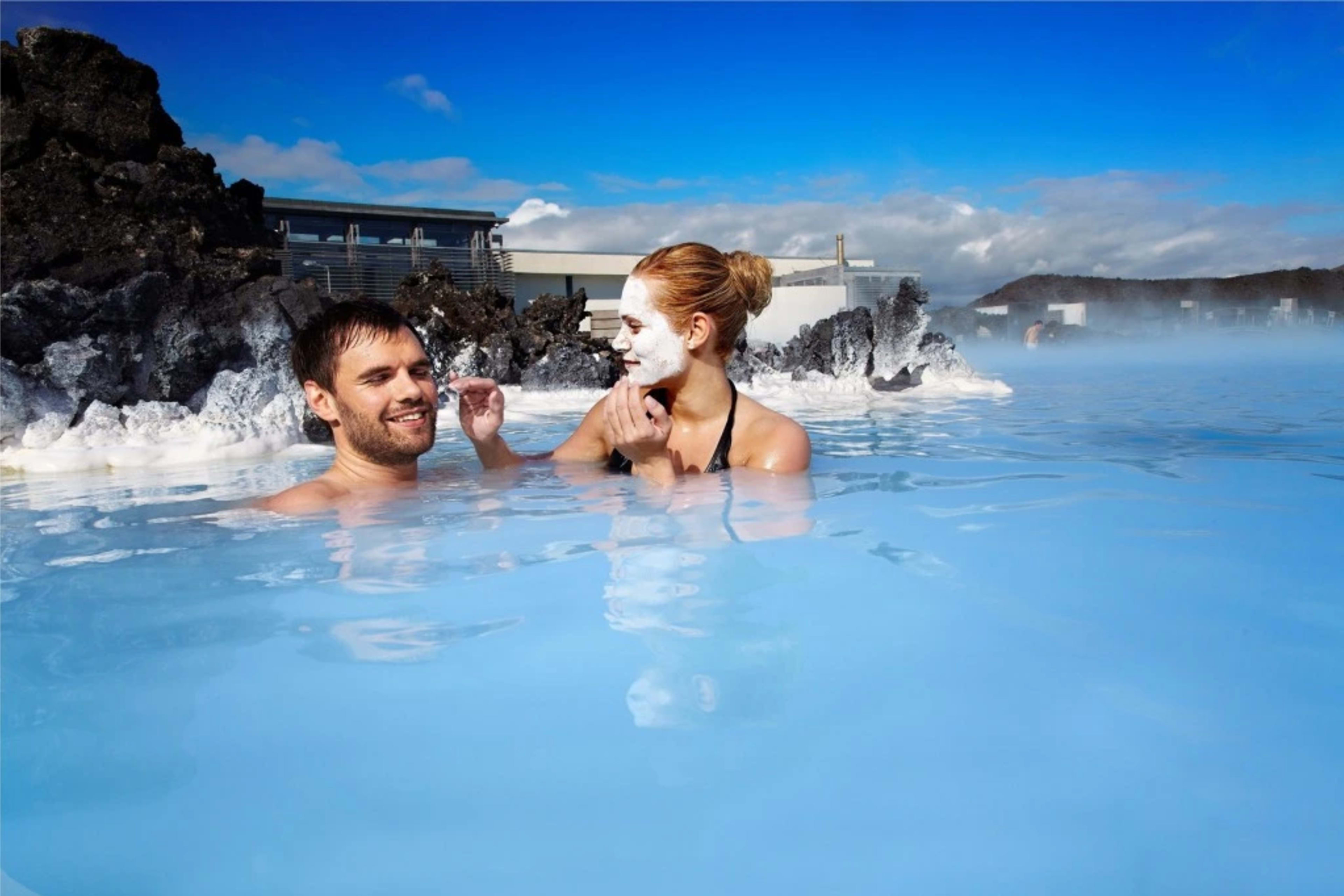
Can you eat at the Blue Lagoon?
There is a café located in the main Blue Lagoon complex, where you can grab some light snacks and beverages. Make sure to keep hydrated while at the spa.
To make it a full day, you could also lunch or dine at one of the restaurants on-site. They all combine stunning views of the lava field surroundings with fresh Icelandic cuisine.
The Spa Restaurant and Lava restaurant are more casual. You could even dine in your bathrobe! For a treat, book dinner at the Moss Restaurant.
Can children visit the Blue Lagoon?
The lagoon is not suitable for children under the age of 2. Children age 8 and under are allowed entry with the use of arm floaters, which are provided free of charge. This is because in some places the lagoon has a depth of 1.4 meters (4 feet 7 inches).
Best time to visit the Blue Lagoon
The Blue Lagoon is open all year long, so you have the choice to come for a dip whenever is best suited for you. If you’re visiting Iceland in order to bathe in the mineral-rich waters, here are our suggestions.
Visiting the Blue Lagoon in summer
As it is never too hot in Iceland, you’re likely to enjoy the soothing warmth of the Blue Lagoon even in summer.
Another bonus point of the high season is that you could actually bask in the midnight sun if you book for late in the evening.
Keep in mind that the summer months of June to August are the most popular with visitors to Iceland. For that reason, we recommend visiting in the shoulder months of April, May, and September if you want to see a quieter side of the lagoon.
- Check out summer tours to Iceland for more inspiration.
- Blog: Iceland in summer – must sees and must dos.
Visiting the Blue Lagoon in winter
We often get asked if the Blue Lagoon is warm in winter. Yes, it is! The water temperature in the bathing and swimming area of the lagoon averages 37–39°C (99–102°F). So it’s pleasant whatever the season.
The only difference is that if you’re visiting between October and April, you may want to walk from the complex to the pool swiftly. Don’t worry, it’s just a short distance, and you’ll warm right up once you’re in the water.
Is it worth going to Iceland and the Blue Lagoon in winter? We think so! Winter is a generally quieter season if you want more time and space to yourself. After days of adventures on glaciers or in national parks, you’ll really appreciate a visit to the geothermal spa.
One of the added benefits of visiting in winter is the chance to see the Northern Lights. If you book later in the day, you may be able to admire them dancing in the sky as you bathe below. What a sight that would be, right?
When you’re ready to book your adventure to the Land of Fire and Ice, browse our Iceland vacation packages or get in touch with our travel consultants. They’ll tailor a memorable trip for you, including a visit to the famous Blue Lagoon.

